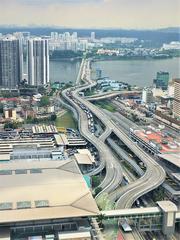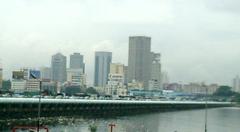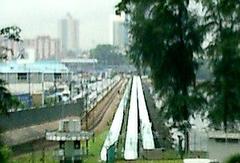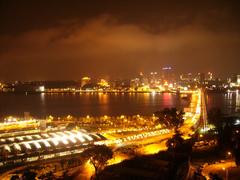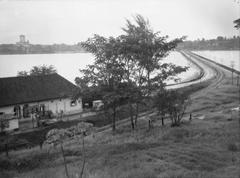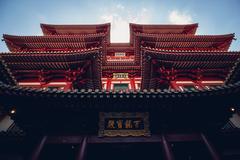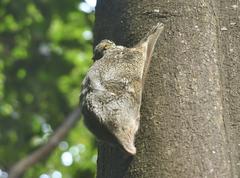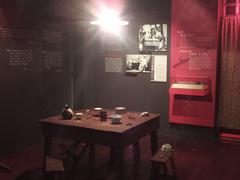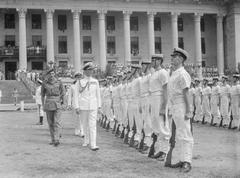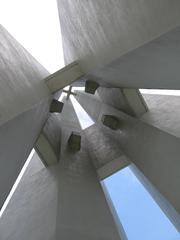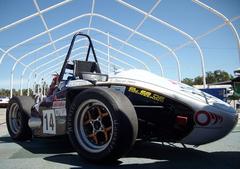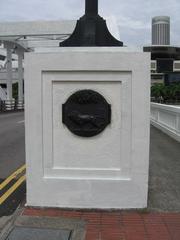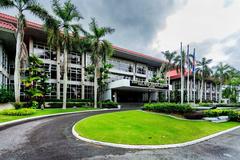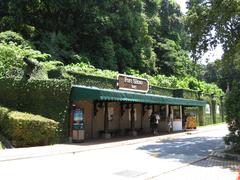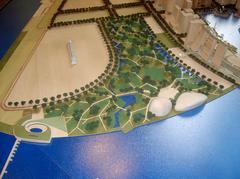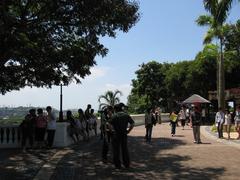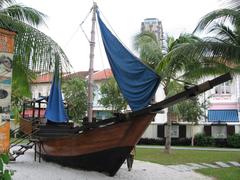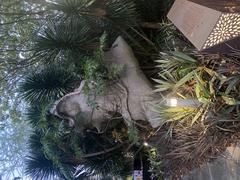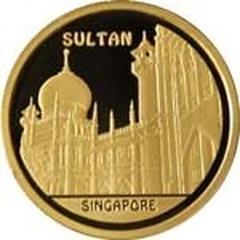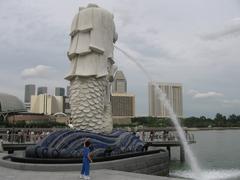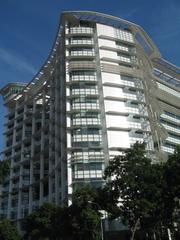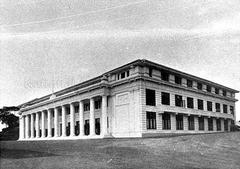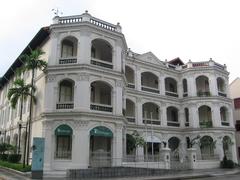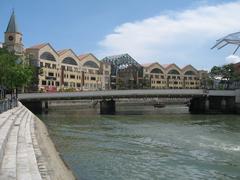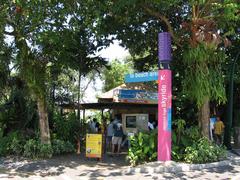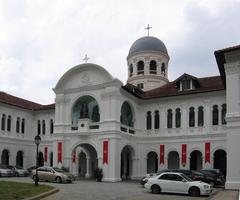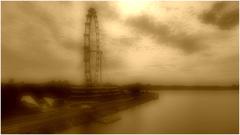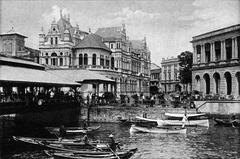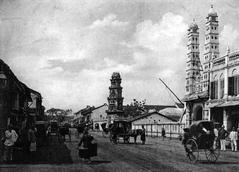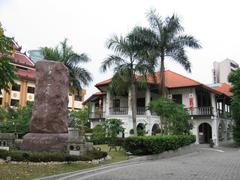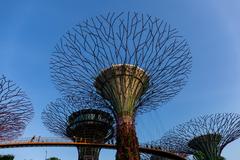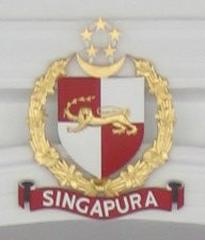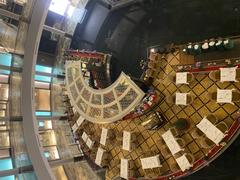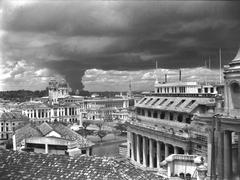
Johor–Singapore Causeway: Visiting Hours, Tickets, and Historical Significance Guide
Date: 14/06/2025
Introduction
The Johor–Singapore Causeway is more than a bridge; it is a century-old symbol of connectivity, economic vitality, and cultural exchange, linking Singapore with the Malay Peninsula. Since its completion in 1924, this 1,056-meter causeway has been a lifeline for commuters, traders, and tourists, facilitating the movement of people and goods between two nations. Today, it stands as one of the world’s busiest land border crossings, handling around 300,000 daily travelers (Straits Times; Perfect Media Group). This detailed guide provides insights into its history, practical visitor information, crossing procedures, ticketing, nearby attractions, and future developments.
Table of Contents
- Historical Overview
- Visiting the Johor–Singapore Causeway
- Symbolism and Ongoing Significance
- Crossing Methods and Visitor Information
- Travel Tips and Accessibility
- Nearby Attractions
- Future Developments
- Frequently Asked Questions (FAQ)
- Conclusion
- References
Historical Overview
Early Conception and Construction
The idea for a fixed link between Singapore and Johor emerged in the late 19th and early 20th centuries, spurred by growing trade and population movement. Prior to the Causeway, ferries and traditional boats ferried people and goods across the strait (BiblioAsia). By 1911, the volume of traffic made a permanent structure essential (NLB).
Construction started in 1919, employing over 2,300 workers and costing around 17 million Straits dollars (Wikipedia). The structure included a single railway and road track, plus a lock channel for small vessels. Goods trains ran from September 1923, with full road and rail services beginning on October 1, 1923. The official opening took place on June 28, 1924, attended by the Sultan of Johor and British officials.
Wartime and Postwar Developments
The Causeway quickly became integral to regional movement and trade. During World War II, it was damaged by British forces to hinder the Japanese advance, but was soon repaired (NLB). Postwar, it resumed its role as the main land link, with the southern boundary between Singapore and Malaysia formalized in 1928 (Cambridge Journal).
Modernization and Centennial
Upgrades over the decades have expanded the Causeway to six vehicular lanes, a railway track, and a pedestrian walkway (reopened in 2018). Modern customs, immigration, and quarantine (CIQ) complexes handle the immense traffic (Straits Times). In 1998, the Second Link at Tuas provided an alternative crossing, but the Causeway remains the preferred route due to its central location.
In 2024, the Causeway marked its 100th anniversary, solidifying its status as both a practical and symbolic connection between Singapore and Malaysia.
Visiting the Johor–Singapore Causeway
Operating Hours
- 24-hour operation: The Causeway, along with the Woodlands (Singapore) and Johor Bahru (Malaysia) checkpoints, is open 24/7 for vehicles, pedestrians, and trains (Straits Times).
Ticketing and Entry
- No general ticket needed: Crossing by car, bus, or on foot requires no ticket, but all travelers must clear immigration and customs.
- KTM Shuttle Tebrau train: Requires advance booking. Tickets are limited and can be purchased online via KTM’s official website (iPackTravel).
Entry Requirements
- Passport: Minimum six months’ validity.
- Visa: Required for certain nationalities; check official websites.
- Vehicle Entry Permit & Autopass: Required for cars; see details in Crossing Methods.
- Touch ‘n Go Card: Needed for tolls in Malaysia (Pacific Prime).
Symbolism and Ongoing Significance
The Causeway is not just a transportation link—it is a symbol of the enduring relationship between Singapore and Malaysia. It has been witness to historical milestones, from colonial infrastructure to wartime struggles, independence, and modern economic integration. It hosts not only daily commuters but also significant events and celebrations, reflecting the shared cultural and economic life of both countries (Straits Times).
Crossing Methods and Visitor Information
By Car
- Requirements: Singapore-registered vehicles need a valid Vehicle Entry Permit and Autopass Card; Malaysian vehicles require a VEP for Singapore.
- Tips: Top up payment cards in advance and ensure your passport is valid (Pacific Prime).
- Traffic: Expect congestion during peak hours; plan for delays, especially on weekends and holidays.
By Bus
- Popular Routes: SBS 170X, Causeway Link CW1, SMRT 950, departing from Kranji MRT and other points (Ramble Travelers).
- Procedure: Passengers disembark for immigration checks on both sides before re-boarding.
- Payment: Buses accept SGD on the Singapore side and MYR on the Malaysian side.
By Train
- Shuttle Tebrau: Five-minute journey between Woodlands Train Checkpoint and JB Sentral.
- Booking: Tickets must be purchased early, especially for weekends and holidays (iPackTravel).
On Foot
- Experience: Walking across the Causeway offers unique views. The walkway is open 24/7 but can be hot and crowded (Pacific Prime).
- Precautions: Bring water, sunblock, and avoid walking during harsh weather.
Immigration and Customs
- Singapore: Enhanced Automated Clearance System (eIACS) and QR code options are available (iPackTravel).
- Malaysia: E-gates are available for Singaporeans; first-time users must register fingerprints (Ahboy). Other nationalities may need to complete the Malaysia Digital Arrival Card (MDAC), but Singaporeans are exempt.
- Documentation: Have your passport and supporting documents ready.
Travel Tips and Accessibility
- Avoid Peak Times: Friday evenings, Sundays, public holidays, and weekday mornings/evenings are busiest.
- Plan Transport: Consider the train for fastest clearance; buses and cars are subject to road congestion.
- Digital Solutions: Use apps like MyICA for QR code clearance and check live traffic updates using Google Maps or Trafik Info Malaysia (Pacific Prime).
- Accessibility: Both checkpoints have ramps, lifts, and dedicated queues for travelers with disabilities. The pedestrian walkway is protected but can be crowded.
- Safety: No photography in immigration zones. Secure valuables and follow instructions from staff.
Nearby Attractions
In Johor Bahru:
- Sultan Abu Bakar State Mosque
- Johor Bahru Old Chinese Temple
- Royal Abu Bakar Museum
- Shopping & Dining: City Square, heritage food trails (Tourism Malaysia; JJ Bucket List Travellers)
In Singapore (near Woodlands):
- Woodlands Waterfront Park
- Nature reserves and family parks
Guided Tours: Several agencies offer city tours covering historical and cultural sites near the Causeway.
Photographic Spots: The Causeway offers striking views at sunrise and sunset, best seen from pedestrian walkways and adjacent parks.
Future Developments
- Rapid Transit System (RTS) Link: Slated for completion by end-2026, the RTS Link will connect Bukit Chagar (Johor Bahru) with Woodlands North (Singapore) in five minutes, easing congestion (Channel NewsAsia).
- Checkpoint Expansion: Singapore’s Woodlands Checkpoint is being expanded to five times its current size, with more lanes, pedestrian travelators, and electronic toll gantries.
- Johor–Singapore Special Economic Zone (JS-SEZ): Launching in 2025, it will offer special border passes and investment incentives to boost bilateral trade.
- Sustainability Initiatives: Renewable energy and green projects are being integrated into new developments.
Frequently Asked Questions (FAQ)
Q: Is the Causeway open 24 hours?
A: Yes, for all vehicles, pedestrians, and trains.
Q: Do I need a ticket to cross?
A: No ticket is required for cars, buses, or walking. KTM Shuttle Tebrau train requires advance ticket purchase.
Q: What documents do I need?
A: A valid passport, necessary visas, and vehicle permits (if applicable). Touch ‘n Go and Autopass cards for drivers.
Q: Are there special facilities for disabled travelers?
A: Yes, both checkpoints offer accessibility features and special queues.
Q: When will the RTS Link open?
A: By the end of 2026.
Conclusion
The Johor–Singapore Causeway is both an engineering marvel and a living symbol of regional integration, connecting people, economies, and cultures for over a century. With its 24-hour accessibility, multiple crossing options, and continual upgrades, it remains a vital artery for Malaysia and Singapore. By planning ahead, utilizing digital solutions, and exploring the rich heritage on both sides, visitors can enjoy a smooth and rewarding crossing experience.
For real-time travel alerts, insider guides, and more, download the Audiala app and follow us on social media.
Summary of Key Points and Visitor Recommendations
- The Causeway operates 24/7 for vehicles, buses, trains, and pedestrians.
- No ticket is needed to cross, except for the KTM Shuttle Tebrau train.
- Peak congestion occurs during weekday mornings/evenings, weekends, and holidays—plan accordingly.
- Both checkpoints are equipped for accessibility and offer digital clearance options.
- The upcoming RTS Link and JS-SEZ will further enhance cross-border convenience and economic cooperation.
- Explore nearby historical and cultural attractions in Johor Bahru and northern Singapore.
- Refer to official travel advisories and resources for the latest updates.
References and Official Sources for Further Reading
- BiblioAsia
- Wikipedia
- Cambridge Journal
- Straits Times
- Pacific Prime
- Ahboy
- Perfect Media Group
- JJ Bucket List Travellers
- Ramble Travelers
- Tourism Malaysia
- Channel NewsAsia
- iPackTravel
- Penang Insider
- Official Johor Tourism Website
- Singapore Tourism Board
- KTM Shuttle Tebrau Ticketing

